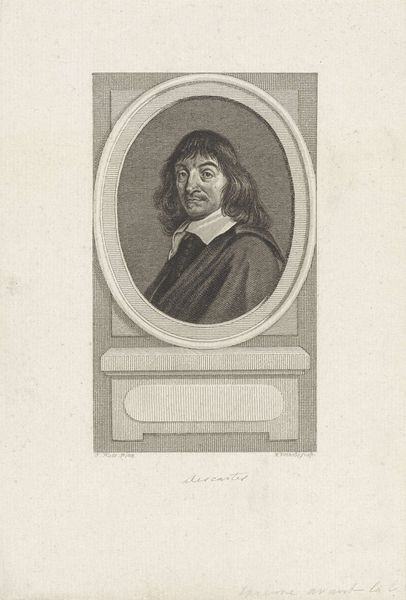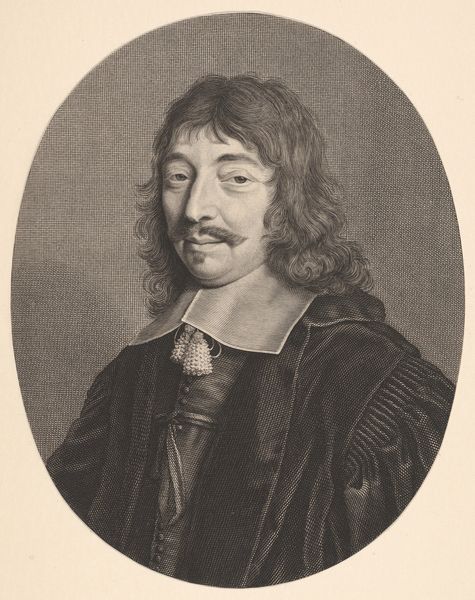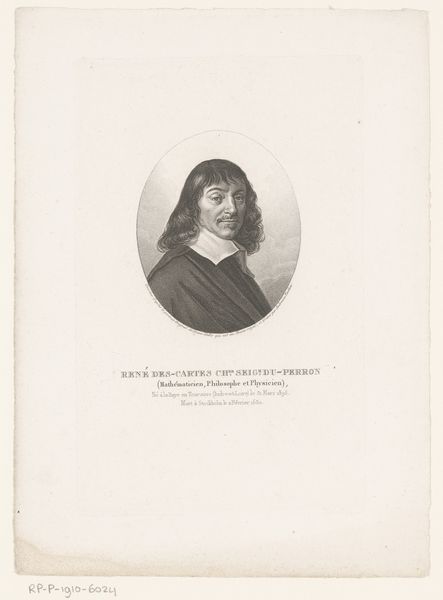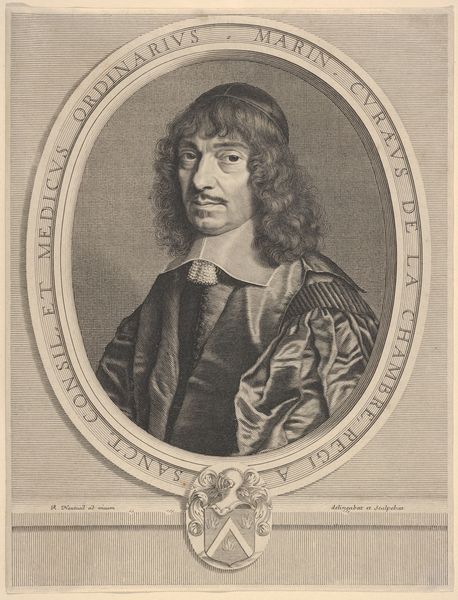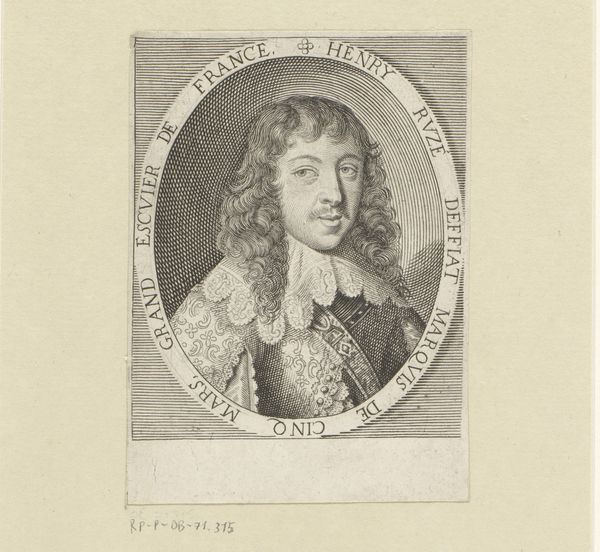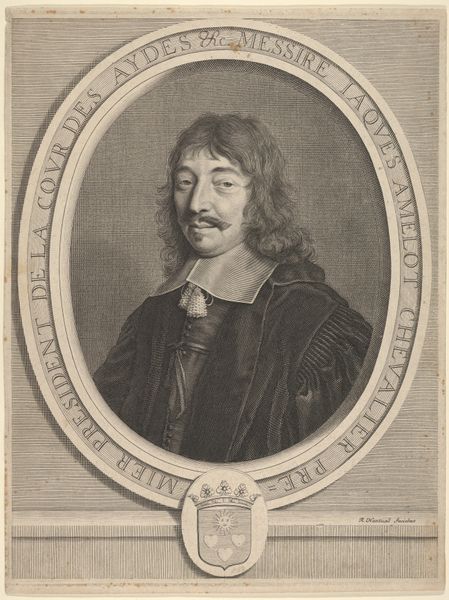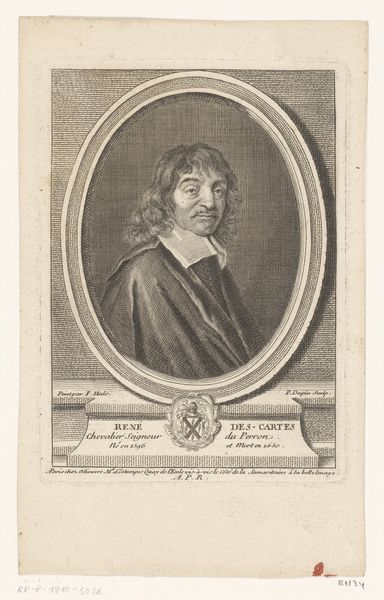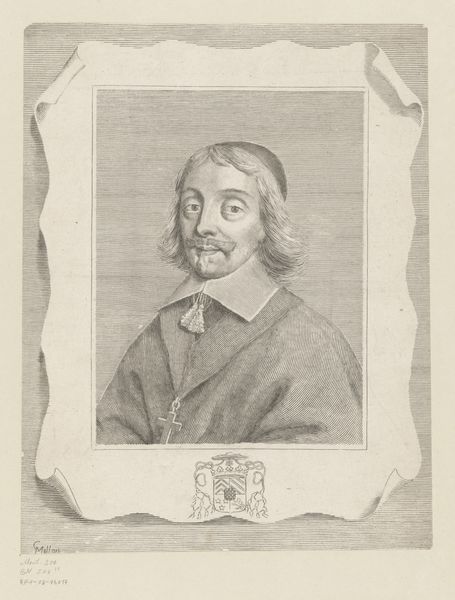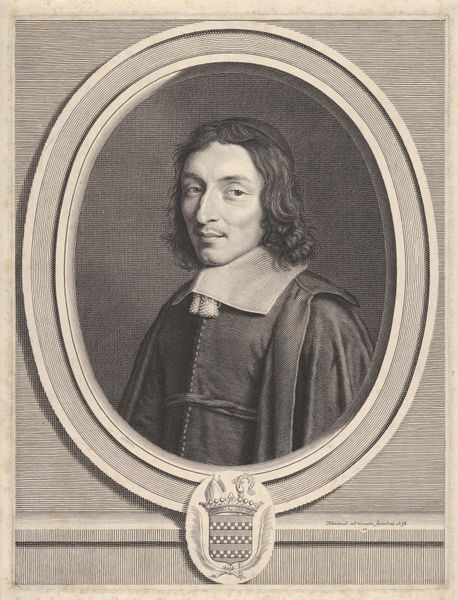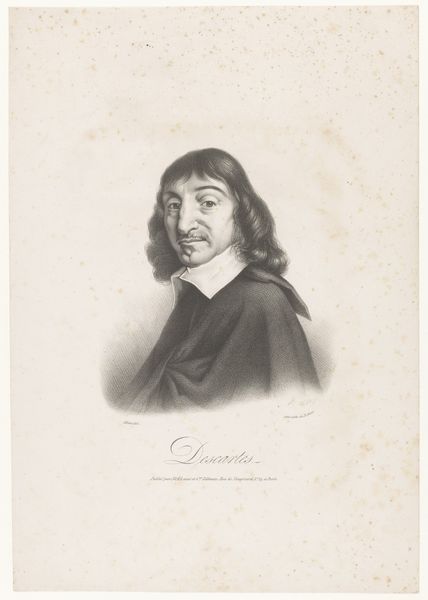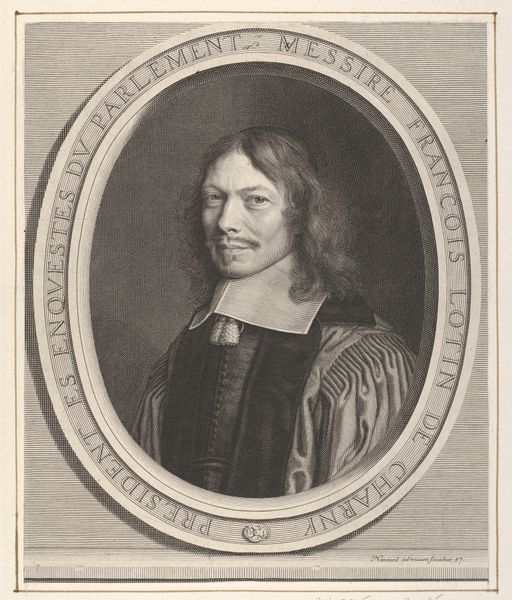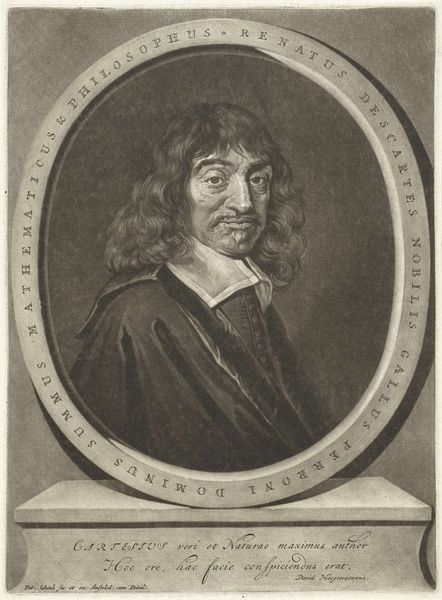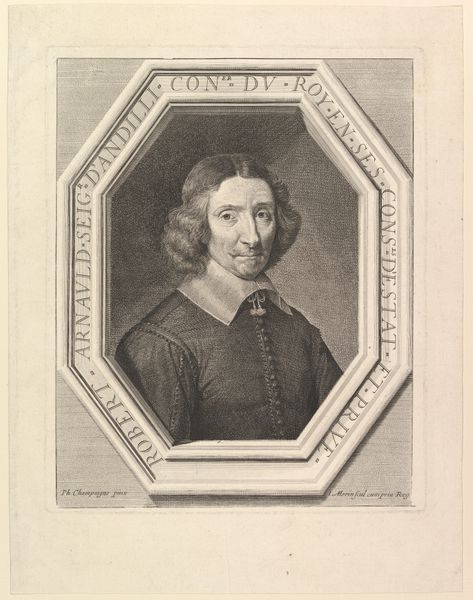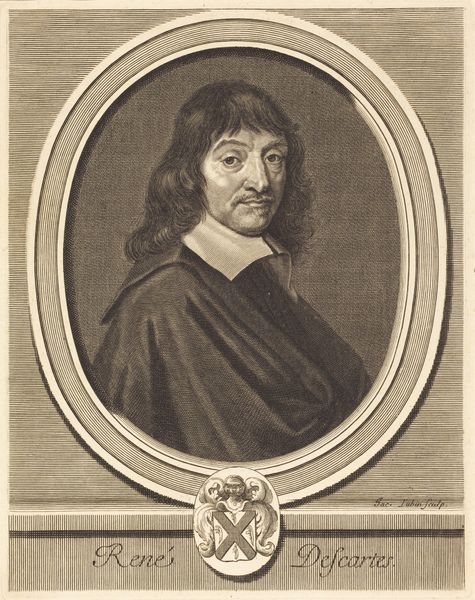
print, paper, engraving
#
portrait
#
neoclacissism
# print
#
paper
#
history-painting
#
engraving
Dimensions: height 380 mm, width 282 mm
Copyright: Rijks Museum: Open Domain
Jean Pierre Sudre created this portrait of René Descartes in the 1800s, using the technique of lithography. Lithography is a printmaking process that relies on the subtle interplay between greasy and wet materials. The artist draws an image on a flat stone or metal plate with a greasy crayon or ink. The surface is then treated so that the image attracts ink, while the surrounding areas repel it. This allows for a print to be made by pressing paper against the prepared surface. In this portrait, the lithographic process has imbued the image with a remarkable tonal range and delicate details. Look at the intricate lines that capture the texture of Descartes’ hair and the subtle shading that defines the contours of his face. Lithography emerged during the Industrial Revolution, and was distinct from older forms of printmaking. Its accessibility democratized image-making, as this printing technique could be used to make artworks for mass consumption. This portrait of Descartes shows how techniques often associated with commercial applications can be used in the world of fine art.
Comments
No comments
Be the first to comment and join the conversation on the ultimate creative platform.
